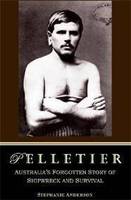From 1974 to 1978 I worked intensively on Dieri (Diyari), an Aboriginal language spoken in the far north of South Australia, mainly in Port Augusta and Marree. I completed my PhD, which was a descriptive grammar of Diyari, in 1978, and published a revised version with Cambridge University Press in 1981. I later published some texts in Diyari, and in 1988 together with Luise Hercus and Philip Jones published a life-history of Ben Murray, one of our main consultants, in the journal Aboriginal History.
Since 1978, jobs in the US, Australia, Hong Kong, Japan, Germany and the UK have kept me busy working on other languages and other topics. My last fieldtrip to South Australia was in 1977. At that time there were about 12 fluent speakers of Diyari, all aged over 50, and in the intervening years all of them have died (Ben Murray passed away in 1994 aged 101). According to the latest edition of Ethnologue Dieri (DIF) is now “extinct”.
This year I am taking my first sabbatical leave since starting work at SOAS over 7 years ago, and have had the opportunity to return to Australia for an extended visit and to start to think about Diyari again. In 2009 I was contacted by Greg Wilson, South Australian Department of Education and Children’s Services (DECS), who told me about a pilot project to introduce the language into schools in South Australia with sponsorship from the Dieri Aboriginal Corporation (DAC) (which just last year purchased Marree Station for the Dieri people – see photos) and financial support from the Australian Federal Department of Environment, Water, Heritage and the Arts (DEWHA). For the past year Greg has worked on creating a CD-ROM of basic language materials in Dieri (as the community members prefer to call it) recording words and simple sentences from a number of people in Port Augusta, Whyalla and Adelaide. At the beginning of this year DAC, with DEWHA funding, asked Greg to start a main phase project to develop Dieri language lessons for R-12 students. He had already produced a massive program for the neighbouring Arabana language, using materials from Luise Hercus’ grammar and dictionary, and working with a number of Arabana speakers, however it looked like the same would not be possible for Dieri as the level of language knowledge seemed much more fragmentary.
Last week Greg organised for me to visit South Australia and travel with him to Port Augusta to meet members of the Dieri community, especially Winnie Naylon and Renie Warren, and their children and grand-children. They are sisters, and the grand-daughters of one of my main consultants from the 1970s, the late Frieda Merrick. Frieda was born in 1885 (she passed away in 1978) and had spent her early years at Killalpaninna Mission that was run by Lutheran missionaries and where Dieri was the main language in use. Her husband Gottlieb Merrick had also been involved with the mission. Frieda spoke only Dieri to her daughters, one of whom was Suzie Kennedy, the mother of Renie and Winnie. I once had the opportunity to interview Suzie Kennedy in 1974 but she was very busy with her family and the opportunity to work with her didn’t arise again.
Renie Warren and her son Reg remembered me from my visits to study Dieri with their grand-mother (and great-grand-mother), and once initial shyness had passed, helped along by a few jokes (my saying nhawu parlali nganayi yingkangu and yidni piti thungka nganayi had the whole room in stitches), it turned out that Renie was very fluent in Dieri, easily able to converse and tell stories. She even told me yidni manyu marla yathayi Diyari yawarra ‘You speak Dieri really well’, quite a complement for someone who hadn’t spoken the language for 33 years!
Greg and I got to work on Lesson 1 of the Dieri language program, recording Winnie and Renie, as well as Reg, who is pretty fluent, despite having spent the past 20 years away from Dieri country working on various mining projects (he is currently working as a driving instructor for the massive dump trucks used to cart ore in the Pilbara). Renie’s grandson Robert also joined in with recording bird names.
So, Dieri (Diyari) is not extinct, indeed far from it. The language has been kept alive continuously within this family, and now I have had the pleasure of studying Dieri with five successive generations. In the future I hope to assist Greg and the community with development of further language learning materials.
Pap smears, footy and language/culture teaching
My colleagues teaching modern European languages are really into plaiting/braiding — recycling bins, speed dating, Tintin cartoons, Dante, and revolutionary songs in Uruguay are entwined with their language teaching. So now, if you were going to work with Aboriginal people to make a language/culture plait, what would it contain? I found an answer thanks to … Read more
 Follow
Follow